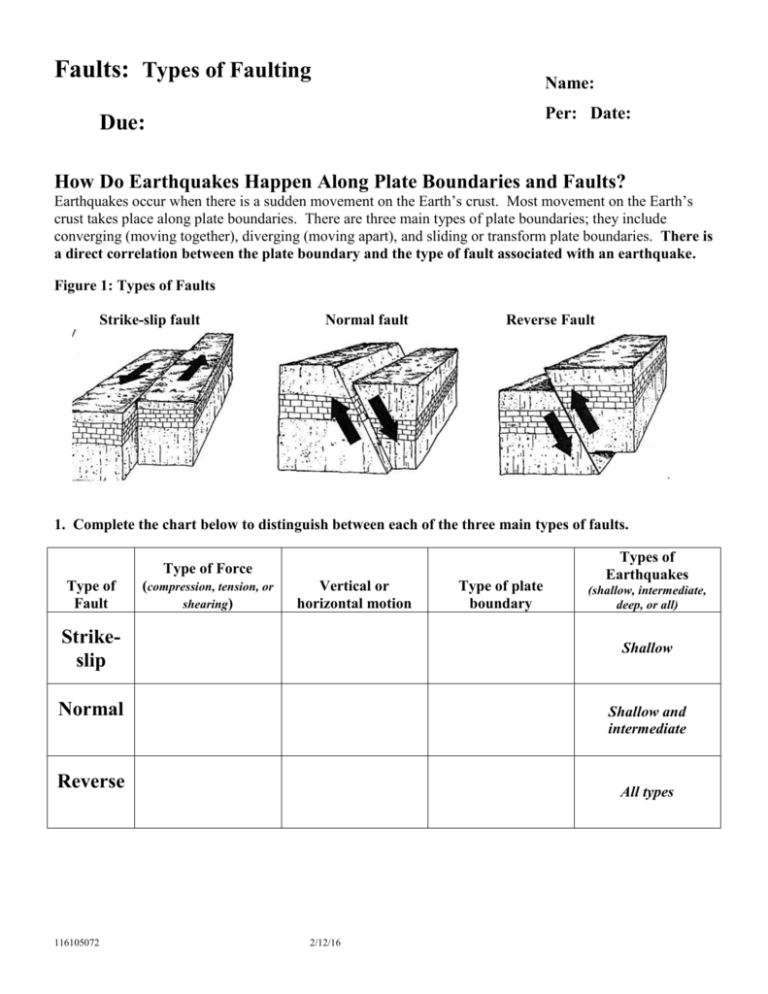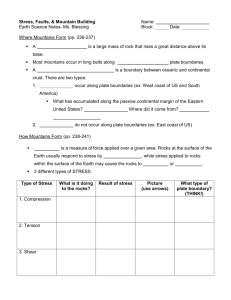TypesOfFaults3
advertisement

Faults: Types of Faulting Name: Per: Date: Due: How Do Earthquakes Happen Along Plate Boundaries and Faults? Earthquakes occur when there is a sudden movement on the Earth’s crust. Most movement on the Earth’s crust takes place along plate boundaries. There are three main types of plate boundaries; they include converging (moving together), diverging (moving apart), and sliding or transform plate boundaries. There is a direct correlation between the plate boundary and the type of fault associated with an earthquake. Figure 1: Types of Faults Strike-slip fault Normal fault Reverse Fault 1. Complete the chart below to distinguish between each of the three main types of faults. Type of Force Type of Fault (compression, tension, or shearing) Vertical or horizontal motion Strikeslip (shallow, intermediate, deep, or all) Shallow Normal Shallow and intermediate Reverse 116105072 Type of plate boundary Types of Earthquakes All types 2/12/16 Application of the Concepts The block diagrams below illustrate a simplified version of a normal and reverse fault. The arrows by each fault show the relative motions of the blocks on both sides of the fault. 1. Draw an arrow on each side of the fault on BOTH diagrams to illustrate the movement along the faults. Check here if complete 2. Indicate in BOTH diagrams which side has younger rocks and which has older rocks at the surface? Check here if complete 3. What is the difference between the hanging wall and the footwall? 4. On an eroded normal fault, are the rocks at the surface on hanging wall side the youngest or oldest surface rocks? Describe fully. 5. On an eroded reverse fault, are the rocks at the surface on the hanging wall side the youngest or oldest surface rocks? Describe fully. 116105072 2/12/16 The diagrams below illustrate an eroded REVERSE fault at two ages. On the left-hand side of the diagram, the fault has not moved. On the right-hand diagram the fault has moved to produce mountains on surface to left side of the drawing. On the left-hand diagram illustrate the movement of this fault by drawing: a. Arrows in the spaces provided indicating the relative movement on each side of the fault. On the right-hand diagram illustrate the movement of this fault by: b. Labeling the oldest and youngest rocks on the surface. c. Sketching in the relative position of the rock layers in the blank part of the diagram. Reverse fault before movement Eroded reverse fault after movement Conclusion: Write four to six complete sentences explaining the relationship between faults, earthquakes and plate boundaries. Feel free to use the back page if necessary. 116105072 2/12/16







